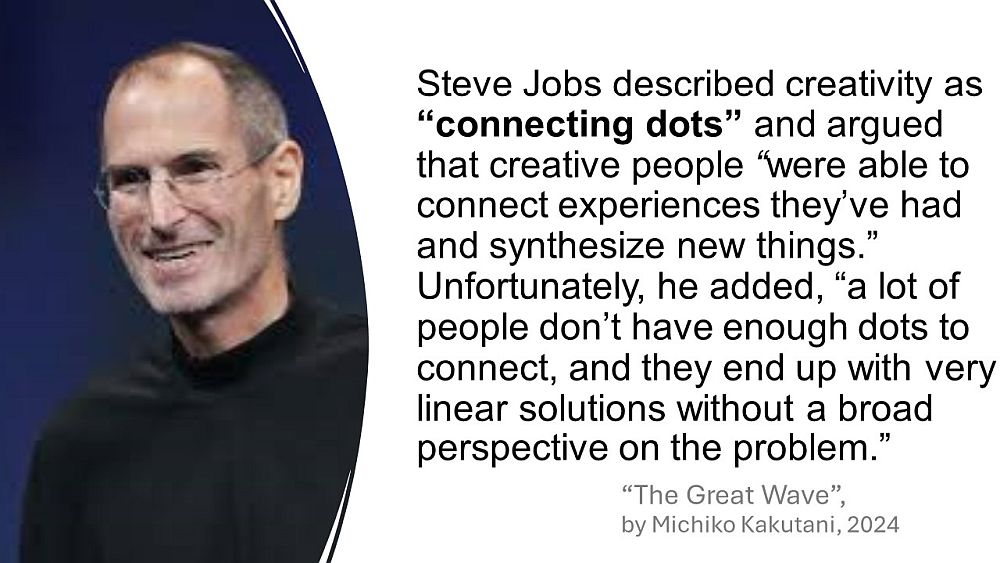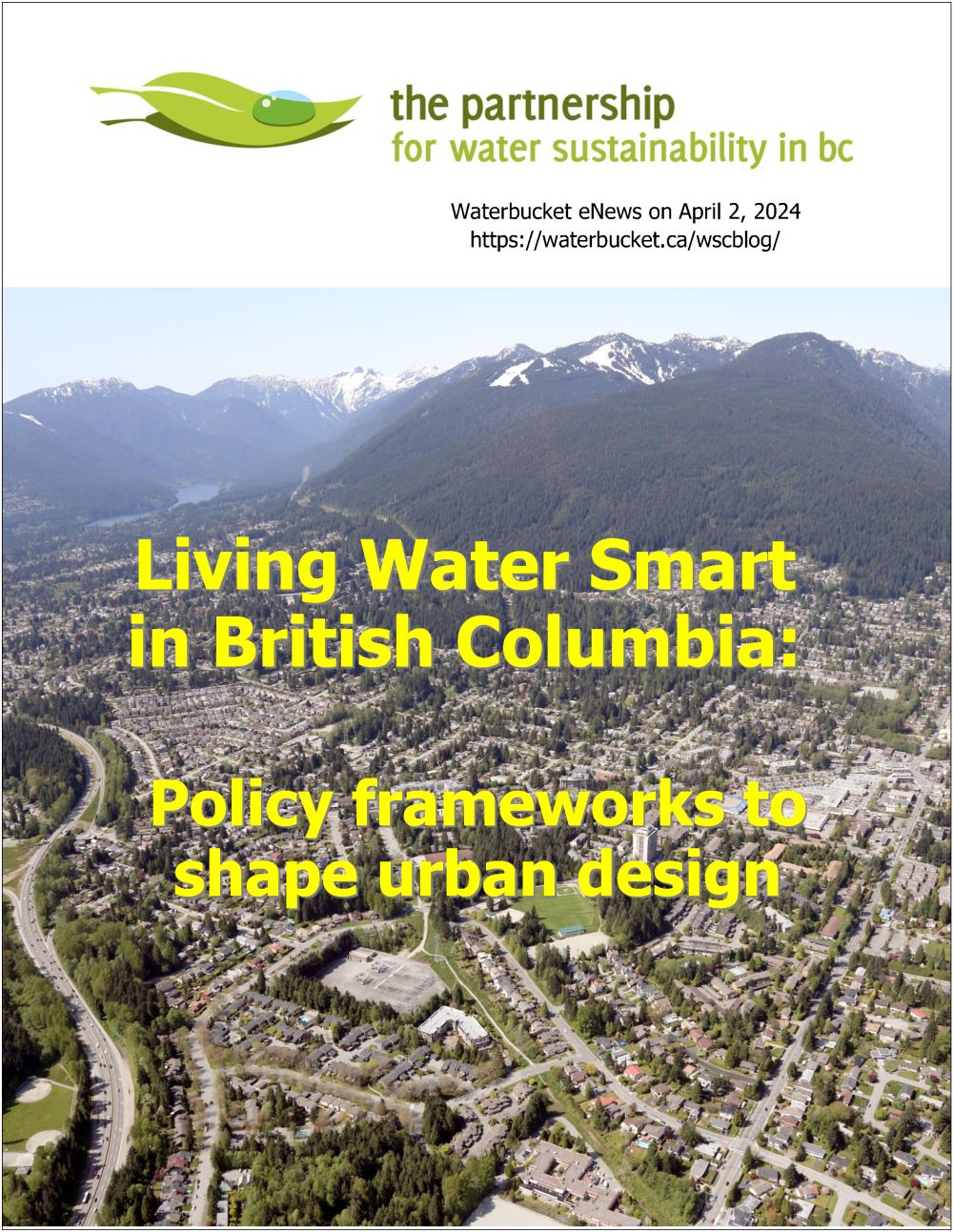LIVING WATER SMART IN BRITISH COLUMBIA: “Steve Jobs described creativity as ‘connecting dots’ and argued that creative people were able to connect experiences they have had and synthesize new things,” stated Kim Stephens, Partnership for Water Sustainability in BC
Note to Reader:
Published by the Partnership for Water Sustainability in British Columbia, Waterbucket eNews celebrates the leadership of individuals and organizations who are guided by the Living Water Smart vision. The edition published on April 2, 2024 featured Susan Haid. She has played a leadership role in trailblazing an ecosystem-based approach to community planning in British Columbia. This approach flowed from passage of the Fish Protection Act 1997. Transformational in nature, it spawned an array of initiatives. The need for this approach to land-use planning is ever more important today.
Policy frameworks to shape urban design
“A terrific Steve Jobs quote (above) encapsulates why processes and outcomes go awry when there is a ‘don’t know, don’t care’ mindset about the history behind the WHY and HOW of policy frameworks that shape urban design,” stated Kim Stephens, Waterbucket eNews Editor and Partnership Executive Director.
“Further, Steve Jobs explained that dot-connectors ‘have had more experiences or they have thought more about their experiences than other people’.”
“It is unfortunate, he added, that ‘a lot of people haven’t had very diverse experiences’ which is why they are ‘without a broad perspective on the problem’. This results in missed opportunities to learn from and build upon the innovation and experience of others.”
Connecting dots to chart a course
“BC communities are experiencing the unintended environmental consequences of policy frameworks that have not been well implemented. But despair not. Knowledge and wisdom that would pull us back from the brink are waiting to be rediscovered and mobilized so that communities can change course in time.”
“My conversations with Susan Haid and other thought leaders shed light on ‘dots’ that would inform a mindset change. However, wanting to know what dots to connect would be the prelude to an attitude switch by practitioners and decision makers that triggers a course correction. ”
Fish Protection Act spawned an array of initiatives
“Charting a course through perilous waters starts with understanding WHY certain ‘dots’ from the period 1995 through 2005 are foundational.”
“The Fish Protection Act 1997 is one such dot. Yet this rich history may be largely ignored and/or forgotten. Reconnecting with this experience can help illuminate the current path forward.”
“Passage of the Fish Protection Act 1997 was the culmination of an attitude switch in response to the salmon crisis of the 1990s. Transformational in nature, it spawned the Riparian Areas Protection Regulation (RAPR), Stormwater Planning: A Guidebook for British Columbia, Integrated Stormwater Management Plans (ISMPs), and the Partnership for Water Sustainability.”
“Unfortunately, RAPR was not well-implemented and that undermined good intentions. In response to scathing critiques in a series of reports by the Ombudsperson between 2014 and 2022, the current provincial government is working to reinvigorate riparian enforcement.”
“The Ombudsperson’s 2014 investigation identified ‘significant gaps between the process the provincial government had established when RAPR was enacted and the level of oversight that was actually in place’.”
“The 2022 update states that ‘many of the issues we identified remain as pressing as they were in 2014; there is work ahead to ensure that the systemic issues are fully addressed’,” concluded Kim Stephens.

Ecosystem-based approach is needed more than ever to adapt to weather extremes
“It is really heartening to observe the recent renewed interest in what I think of as ecosystem-based planning and is now often called green and blue systems in cities,” states Susan Haid.
“It sounds simple, but it is heartening because this has NOT really been a key theme in the public dialogue for some time. The pandemic has reminded us of the importance of green space and access to nature.”
“It is even more important now because in 1997 we did not have the kind of weather extremes such as atmospheric rivers and heat domes we are now regularly experiencing.”
“There is a resurgence of ideas that is influencing policy making!”
To Learn More:
To read the complete story, download a copy of Living Water Smart in British Columbia: Policy frameworks to shape urban design.
DOWNLOAD A COPY: https://waterbucket.ca/wcp/wp-content/uploads/sites/6/2024/03/PWSBC_Living-Water-Smart_Susan-Haid_policy-shapes-urban-design_2024.pdf



